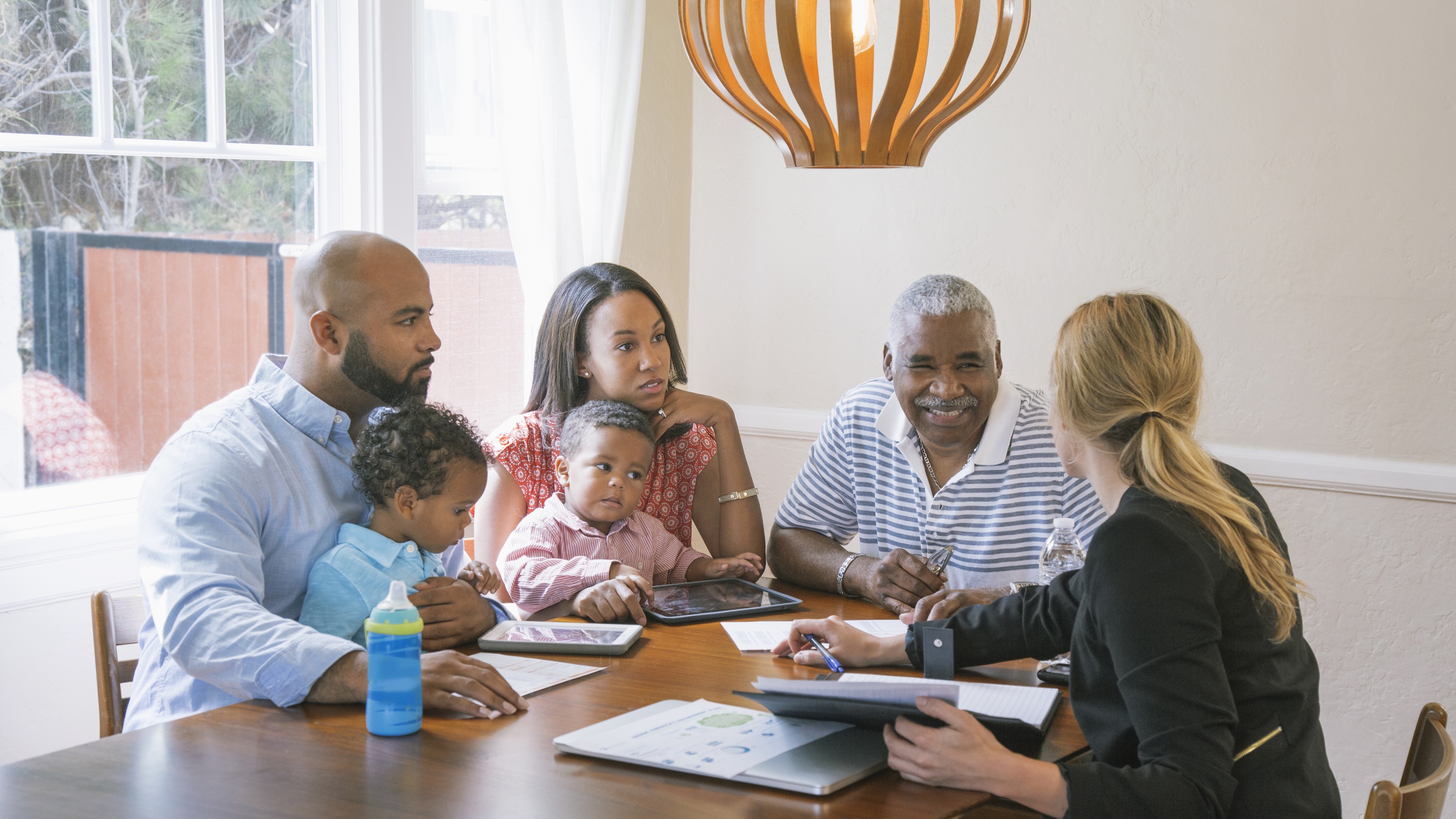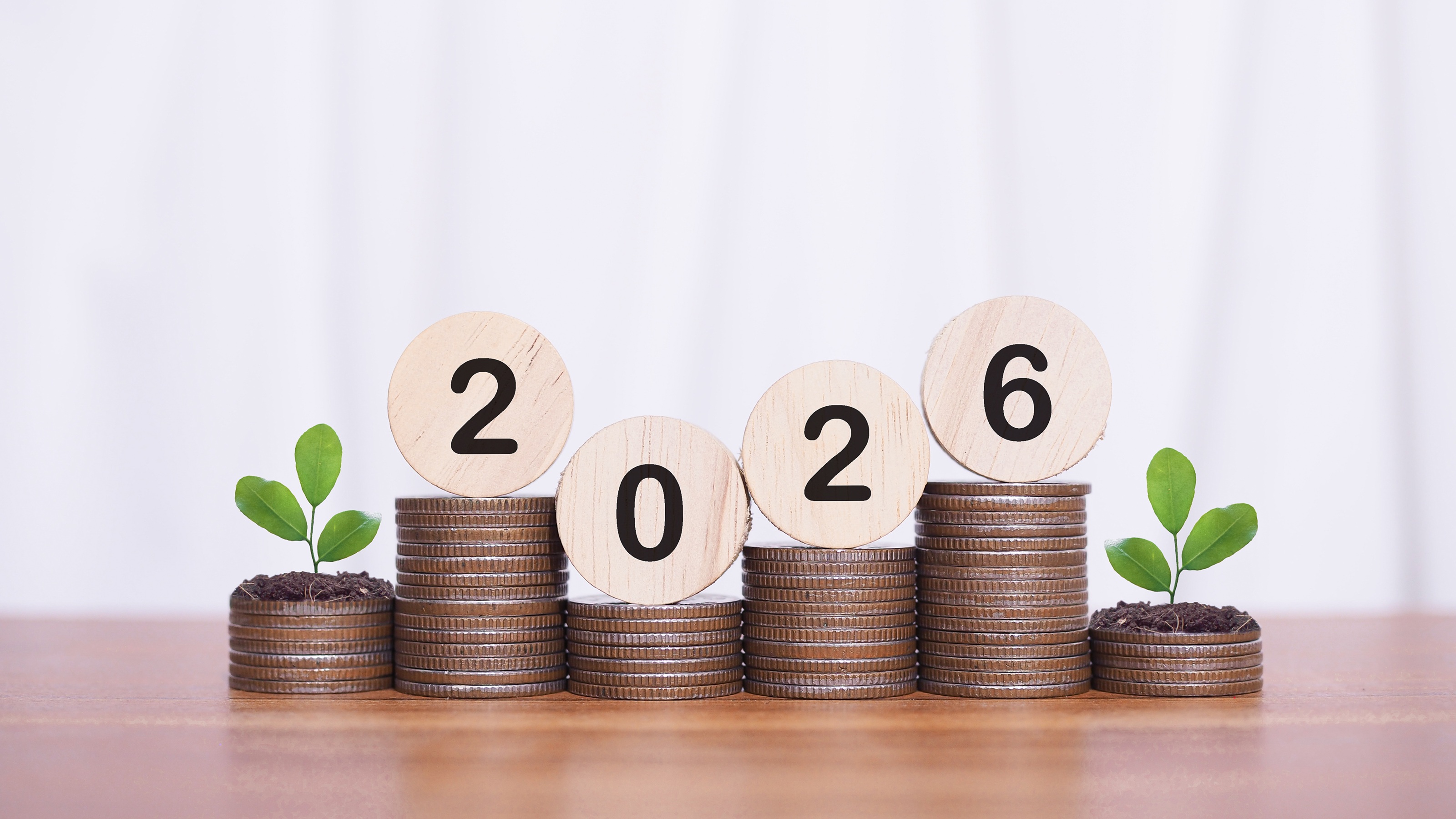Time to Take Stock Profits? 4 Steps to Consider Now
With stocks in the stratosphere, many investors have happily put off rebalancing as they watch their portfolios rise. Those same investors won’t be smiling when stocks fall back down to earth. It could be time to do some strategic selling.


Are you concerned that the stock market may stumble soon? History would suggest that a pullback is highly likely because the stock market, as measured by the S&P 500 index, is up over 336% from March 2009 to late July 2017 (19% annualized). It’s probably safe to assume that the stock market, which has averaged 10% per year since 1926, can’t sustain its current 19% pace forever.
If these skewed figures don’t make you want to examine your portfolio further, consider that we are also in the second-longest and second-largest bull market since World War II, and we are sitting in the middle of the second most pricey market since the 1999 tech bubble (as measured by P/E ratios).
I’d suggest that it is time to take profits!
Although the bull market stats are shocking, you should take profits sensibly and in a measured way, as opposed to letting fear or irrationality dictate your moves.
From just $107.88 $24.99 for Kiplinger Personal Finance
Be a smarter, better informed investor.

Sign up for Kiplinger’s Free Newsletters
Profit and prosper with the best of expert advice on investing, taxes, retirement, personal finance and more - straight to your e-mail.
Profit and prosper with the best of expert advice - straight to your e-mail.
Taking profits isn’t easy, because it means selling some of the investments that you love and buying some that probably aren’t your favorites. Taking profits now will also mean selling some stocks and buying some bonds. The nice thing, though, is that you will be selling at all-time highs.
If you are like most investors, you’ve let your stock investments ride, taken no action with your portfolio, and largely enjoyed the eight-year climb. If you’ve been riding the stock wave, your portfolio is most likely now out of alignment. If you haven’t rebalanced your portfolio for several years, your stock allocation is larger than it probably should be.
Here are four steps you can take right now:
Step One: Examine your allocation
Determine what your stock and bond allocation looks like now and what it should look like considering your goals, and then make the necessary changes: The biggest factor to determine your allocation is when you plan to spend your investment money. I’d suggest using the bucket method for allocating your portfolio.
- Bucket one is filled with cash (bank checking, savings, CDs). This money will be spent over the next one to two years. Since you know it will be spent shortly, you shouldn’t put it at risk in the stock or bond markets.
- Bucket two is filled with bonds. This is the money you will spend from years three through nine.
- And finally, bucket three is filled with stocks, or money you are not planning to spend for 10 or more years.
Think about this for a moment. If we experienced another 2008 market, and stocks fell 50%, how worried would you be? Your stocks in bucket three would have 10 years to recover and provide you a decent return before you’d need them to cover your expenses. Hopefully this would provide a great deal of peace of mind knowing that your stocks wouldn’t start to be needed for 10 years.
Step Two: Trim down overconcentrated positions
If you own a portfolio of individual stocks or stock funds, it is likely that a couple of them have been on fire since 2009. For example, Apple is up 1,294% since March 2009, and Amazon is up 1,595%. If you’ve owned these two companies, then congratulations. However, you are likely sitting heavily in these two positions now.
Start thinking like a portfolio manager by setting some limits on how much you are going to let any one company become part of your portfolio. I’d suggest not having more than 10% of your portfolio in any one stock before age 55 and no more than 5% in one stock after age 55. The closer you get to retirement the more diversified you want to be.
Step Three: Diversify
I’d suggest you invest your stock portfolio across eight to 10 stock asset classes (large, mid, small, international, growth, value, etc.), and three to four bond asset classes using no-load, no-transaction-fee mutual funds or low-cost exchange traded index funds.
Step Four: Execute your plan and stay the course
Know what to expect from your newly rebalanced portfolio. If you know what to expect, you hopefully won’t overreact when a correction eventually comes.
So, let’s go through the process. John & Susan Randolph are age 60 and are planning to retire in two years, at age 62. Back in 2009 their $500,000 retirement portfolio was allocated 60% stocks and 40% bonds. They owned only the three positions listed below. They planned on being allocated about 50% stocks and 50% bonds by the time they retired, but because the stock market has done so well they’ve just let their portfolio ride the wave over the years. So today, they’ve amassed a large overall portfolio, $2,222,420, but 85% of it is invested in stocks and they are just two years from retirement.
| Position | Ticker | Category | Value on 3/9/2009 | Allocation | Value on 7/21/2017 | Return | Allocation |
|---|---|---|---|---|---|---|---|
| T. Rowe Price Growth Stock | PRGFX | Large-Cap U.S. Growth | $250,000 | 50% | $1,195,600 | 378% | 54% |
| Apple Computer | AAPL | Large-Cap U.S. Growth | $50,000 | 10% | $697,320 | 1295% | 31% |
| Stock Allocation | Row 2 - Cell 1 | Row 2 - Cell 2 | Row 2 - Cell 3 | 60% | Row 2 - Cell 5 | Row 2 - Cell 6 | 85% |
| Dodge & Cox Income | DODIX | Corporate Bonds | $200,000 | 40% | $329,500 | 65% | 15% |
| Bond Allocation | Row 4 - Cell 1 | Row 4 - Cell 2 | Row 4 - Cell 3 | 40% | Row 4 - Cell 5 | Row 4 - Cell 6 | 15% |
| Total Portfolio | Row 5 - Cell 1 | Row 5 - Cell 2 | $500,000 | 100% | $2,222,420 | 344% | 100% |
What could happen if they don’t take profits and reallocate their portfolio and we experienced another 2008? Let’s take a look. If they leave their portfolio alone and we experience another 2008-type drop, their portfolio would drop almost $1 million. That big of a drop may mean having to work a few more years or reduce the amount of money they were planning to live on during retirement.
| Position | Ticker | Category | Value on 7/21/2017 | Allocation | What if - 2008 Drop? | Return |
|---|---|---|---|---|---|---|
| T. Rowe Price Growth Stock | PRGFX | Large-Cap U.S. Growth | $1,195,600 | 54% | $690,339 | -42% |
| Apple Computer | AAPL | Large-Cap U.S. Growth | $697,320 | 31% | $300,475 | -57% |
| Stock Allocation | Row 2 - Cell 1 | Row 2 - Cell 2 | $1,892,920 | 85% | Row 2 - Cell 5 | Row 2 - Cell 6 |
| Dodge & Cox Income | DODIX | Corporate Bonds | $329,500 | 15% | $328,544 | -0.29% |
| Bond Allocation | Row 4 - Cell 1 | Row 4 - Cell 2 | $329,500 | 15% | Row 4 - Cell 5 | Row 4 - Cell 6 |
| Total Portfolio | Row 5 - Cell 1 | Row 5 - Cell 2 | $2,222,420 | 100% | $1,319,359 | -41% |
Since the Randolphs aren’t retiring for two years they don’t need any of their money that they’ve earmarked for retirement to be stored in bucket one (cash). They’ve decided to allocate their retirement portfolio 50% stocks and 50% bonds. This will put more money in bucket two (bonds) than they’ll need to cover their spending for the next 10 years but it will dramatically reduce their risk, so they are OK deviating slightly from the bucket model.
They could buy the following 50/50 model portfolio and greatly reduce their risk. You’ll notice that the reallocation took them from $1.9 million to $1.1 million in stocks. You’ll also notice the impact of another 2008 on their portfolio: a drop of 18%, as opposed to 41% with their current allocation. The reallocation would reduce their risk, in this comparison, by 23 percentage points.
| Most Popular Funds | Ticker | Category | Target Allocation 7/21/2017 | Target Allocation % 7/21/2017 | What if - 2008 Drop? | 2008 Return |
|---|---|---|---|---|---|---|
| Fidelity Contrafund | FCNTX | Large-Cap U.S. Growth | $222,242 | 10.0% | $139,657 | -37% |
| Dodge & Cox Stock | DODGX | Large-Cap U.S. Value | $222,242 | 10.0% | $125,989 | -43% |
| Apple | AAPL | Large-Cap U.S. Growth | $111,121 | 5.0% | $47,882 | -57% |
| T. Rowe Price Mid Cap Growth | RPMGX | Mid-Cap U.S. Growth | $111,121 | 5.0% | $67,017 | -40% |
| Fidelity Low Priced | FLPSX | Mid-Cap U.S. Value | $111,121 | 5.0% | $70,929 | -36% |
| T. Rowe Price New Horizons | PRNHX | Small-Cap U.S. Growth | $55,560 | 2.5% | $34,014 | -39% |
| Vanguard Small Cap Value Adm | VSIAX | Small-Cap U.S. Value | $55,560 | 2.5% | $37,753 | -32% |
| Oppenheimer International Growth A | OIGAX | International Growth | $88,896 | 4.0% | $51,996 | -42% |
| Oakmark International | OAKIX | International Value | $88,896 | 4.0% | $52,396 | -41% |
| Oppenheimer Developing Mkts A | ODMAX | International Emerging | $44,448 | 2.0% | $23,100 | -48% |
| Stock Allocation | Row 10 - Cell 1 | Row 10 - Cell 2 | $1,111,210 | 50.0% | $650,732 | Row 10 - Cell 6 |
| Pimco Total Return D | PTTDX | Corporate Bond | $444,484 | 20.0% | $464,397 | 4% |
| American Fund U.S. Government Bond A | AMUSX | Government Bond | $444,484 | 20.0% | $478,843 | 8% |
| Templeton Global Bond A | TPINX | Global Bond | $222,242 | 10.0% | $236,199 | 6% |
| Bond Allocation | Row 14 - Cell 1 | Row 14 - Cell 2 | $1,111,210 | 50.0% | $1,179,438 | Row 14 - Cell 6 |
| Total Portfolio | Row 15 - Cell 1 | Row 15 - Cell 2 | $2,222,420 | 100.0% | $1,830,171 | -18% |
When the Randolphs begin pulling money out of their portfolio in a couple of years they’ll likely have more than $1.1 million to draw from for eight to 10 years, whether or not stocks do well in the interim.
Of course, remember to check the tax consequences of rebalancing. I’d suggest rebalancing in your retirement accounts so you don’t trigger capital gains. However, if you don’t have that option, it likely still makes sense to take some profits (and pay the taxes).
I don’t believe the sky is falling and the market is doomed. In fact, economically I think things look good. However, I do think now is a good time for fundamentally sound investment management. A portfolio checkup for many will lead to taking profits, reallocating and becoming a little more conservative.
Notes:
- Mutual fund performance numbers were obtain from Morningstar Office
- Bull Market: prices that continue rising without being interrupted by a 20% decline
- Longest bull market, 10/1990 to 3/2000, 114 months, current bull market 101 months, no bull market has made it to its 10th year anniversary. We are at 8.4 years.
- Largest bull market, 10/1990 to 3/2000, 417%, current bull market 336%
- S&P 500 P/E at end of bull market, 3/2000: 28.9, current P/E 26.2
- S&P 500, 3/9/09 to 7/21/17, 336%
Profit and prosper with the best of Kiplinger's advice on investing, taxes, retirement, personal finance and much more. Delivered daily. Enter your email in the box and click Sign Me Up.

Ray LeVitre is an independent fee-only Certified Financial Adviser with over 20 years of financial services experience. In addition he is the founder of Net Worth Advisory Group and the author of "20 Retirement Decisions You Need to Make Right Now."
-
 3 Ways High-Income Earners Can Maximize Their Charitable Donations in 2025
3 Ways High-Income Earners Can Maximize Their Charitable Donations in 2025Tax Deductions New charitable giving tax rules will soon lower your deduction for donations to charity — here’s what you should do now.
-
 Another State Quietly Bans Capital Gains Tax: Will Others Follow?
Another State Quietly Bans Capital Gains Tax: Will Others Follow?Capital Gains A constitutional amendment blocking future taxes on realized and unrealized capital could raise interesting questions for other states.
-
 How to Calm Your Retirement Nerves When It's Time to Shift from Savings Mode to Spending Mode
How to Calm Your Retirement Nerves When It's Time to Shift from Savings Mode to Spending ModeTransitioning from saving to spending in retirement can be tricky, but devising a strategic plan can help ensure a smooth and worry-free retirement.
-
 Why Wills and Trusts Aren't Enough in the Great Wealth Transfer, From an Attorney Who Knows
Why Wills and Trusts Aren't Enough in the Great Wealth Transfer, From an Attorney Who KnowsFamilies need to prepare heirs through communication and financial know-how, or all that money could end up causing confusion, conflict and costly mistakes.
-
 Private Markets for Main Street: What Financial Advisers' Clients Need to Know
Private Markets for Main Street: What Financial Advisers' Clients Need to KnowWith product innovation 'democratizing' private market access for everyday investors, advisers must step up their game to educate clients on the pros and cons.
-
 Seven Practical Steps to Kick Off Your 2026 Financial Planning
Seven Practical Steps to Kick Off Your 2026 Financial PlanningIt's time to stop chasing net worth and start chasing real worth. Here's how to craft a plan that supports your well-being today and in the future.
-
 A Retirement Plan Isn't Just a Number: Strategic Withdrawals Can Make a Huge Difference
A Retirement Plan Isn't Just a Number: Strategic Withdrawals Can Make a Huge DifferenceA major reason not to set your retirement plan on autopilot: sequence of returns risk. Here's how to help ensure a bad market won't sink your golden years.
-
 Fish and Chips? More Like Fish and a Side of Customer Confusion and Anger
Fish and Chips? More Like Fish and a Side of Customer Confusion and AngerYou expect chips — French fries, actually — to come with your order of fish and chips? Think again. This restaurant could be violating the truth-in-menu laws.
-
 What the 2026 Tax Landscape Means for Advisers, From a Financial Planner
What the 2026 Tax Landscape Means for Advisers, From a Financial PlannerThe OBBB's impacts on 2026 are taking shape, amplifying the need for financial advisers' expertise in transforming stability into strategy for their clients.
-
 From Vision to Value: A Blueprint for Helping to Build Your Advisory Practice
From Vision to Value: A Blueprint for Helping to Build Your Advisory PracticeAs a financial professional, you can draw lessons from Advisors Excel's journey to find ideas, strategies and inspiration for growing your own advisory business.